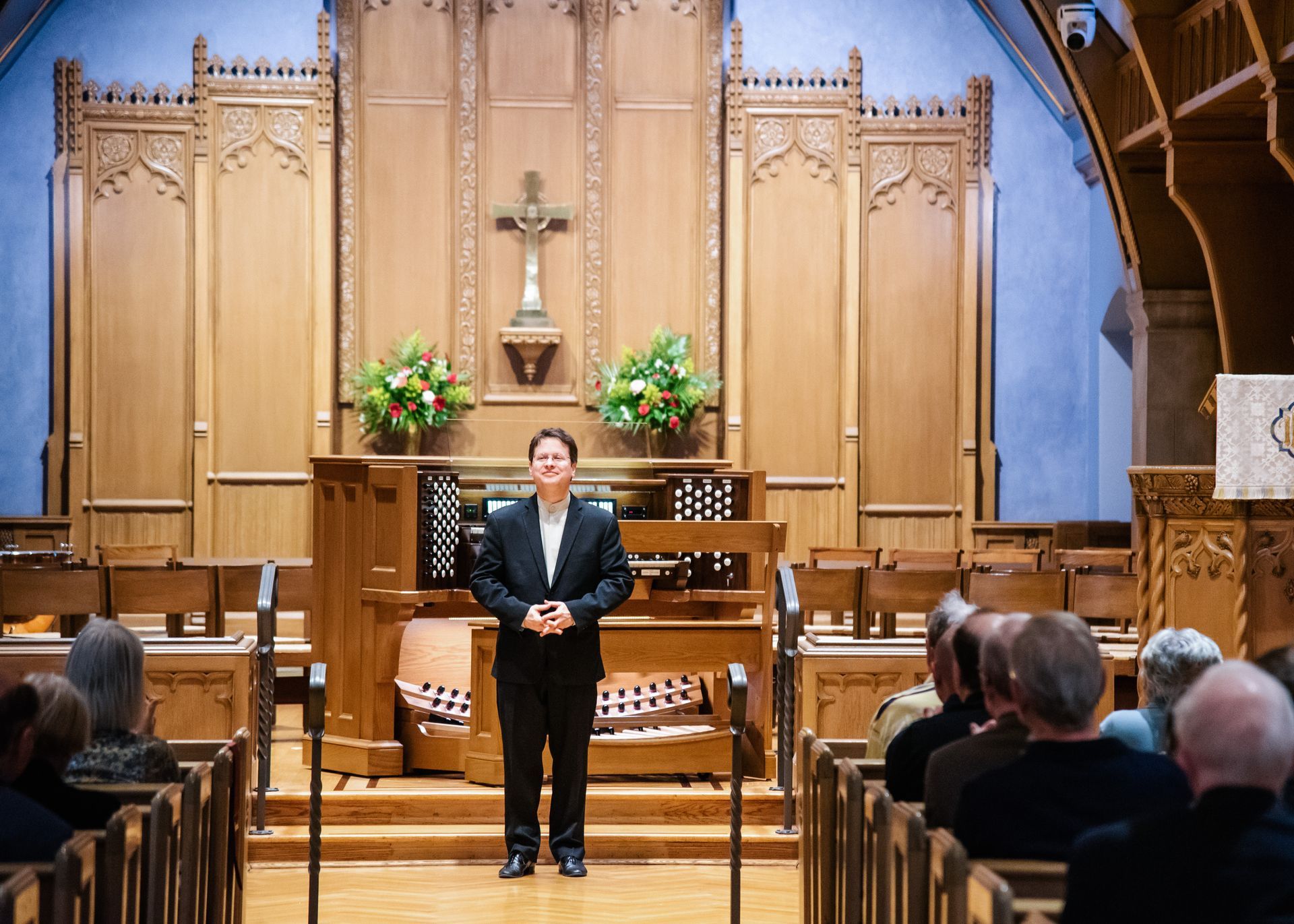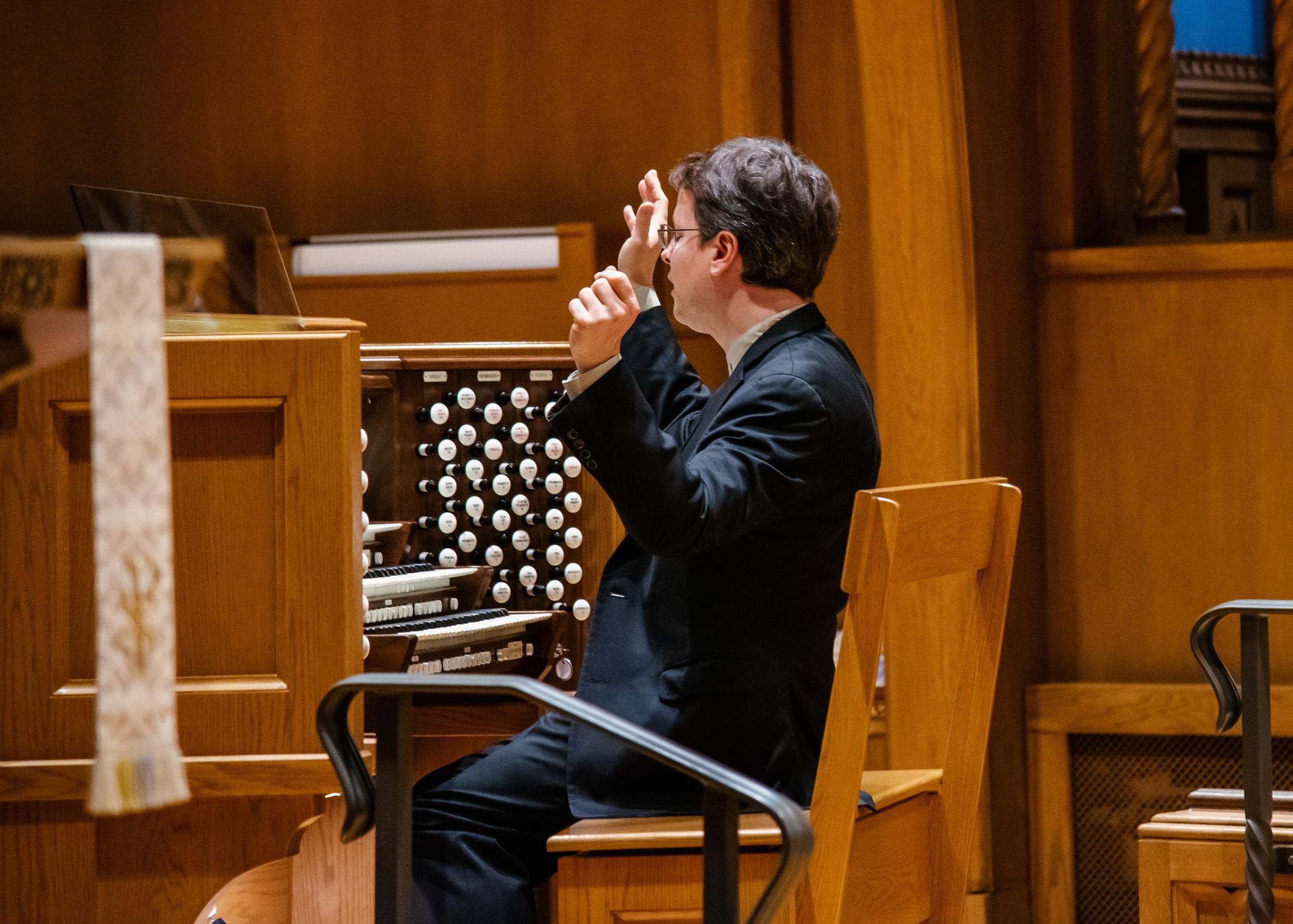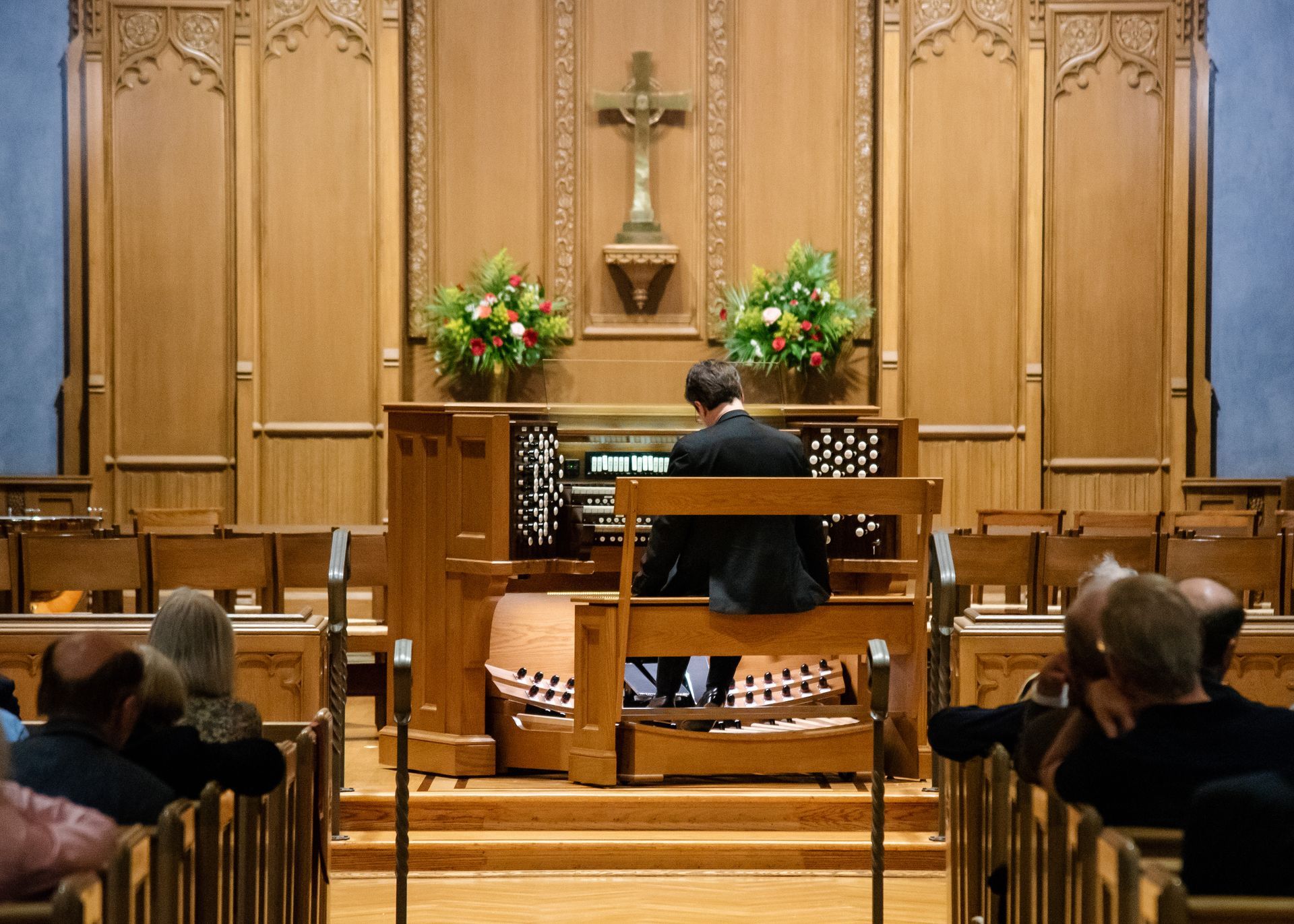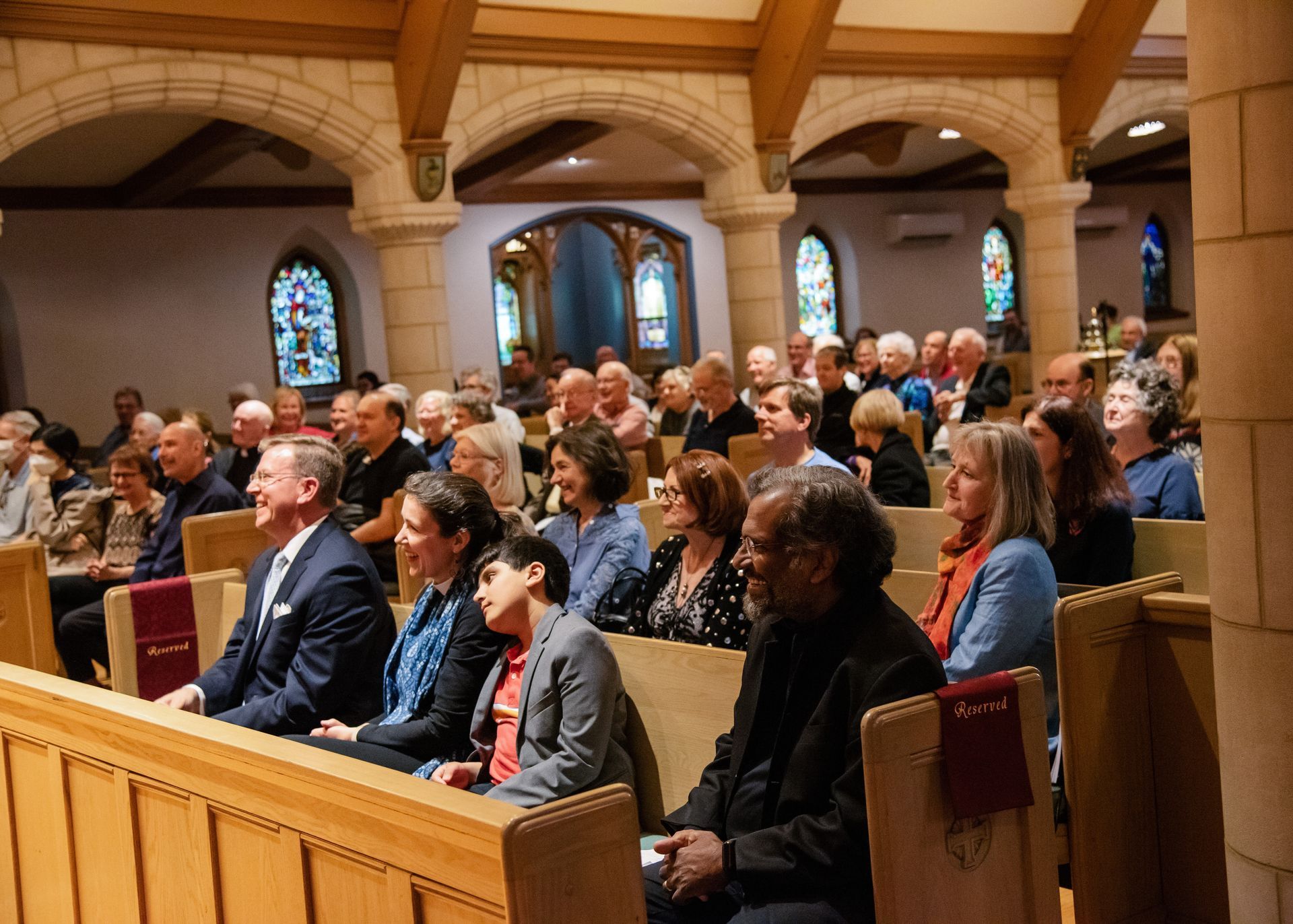Internationally Acclaimed Organist Paul Jacobs Performs Solo Concert On Historic Aeolian-Skinner Organ at Christ Church in Short Hills, New Jersey
Slide title
Write your caption hereSlide title
Write your caption hereButtonSlide title
Write your caption hereButtonSlide title
Write your caption hereButtonSlide title
Write your caption hereButton
Paul Jacobs entered the sanctuary to take center stage at the chancel, where the historic Aeolian-Skinner Opus 1347 console had been carefully situated for the solo concert. He is greeted by warm, welcoming applause by the full house audience of parishioners, guests and organ enthusiasts attending the performance at Christ Church in Short Hills, New Jersey in celebration of its 140th anniversary.
Jacobs, an internationally esteemed organist, has been heralded as “one of the major musicians of our time” by Alex Ross of The New Yorker and as “America’s leading organ performer” by The Economist. His solo concerts feature musical selections, based on “the strengths and attributes of the particular instrument,” according to Jacobs. “The organ is like no other instrument; each one is custom built with a distinct tonal palette, becoming part of the architecture. The organist must be imaginative in capturing the spirit of the music on different instruments,” he explained.
Jacobs travels extensively as a guest artist for concerts and festivals around the world. His international acclaim leads to invitations for solo organ performances at notable concert halls, cathedrals and churches worldwide. “Organists have the pleasure of performing the most diverse array of instruments in some of the most beautiful buildings. Many of the great organs of the world are housed in magnificent churches and cathedrals,” he said.
He is frequently invited as a soloist to perform with prestigious orchestras, having established a reputation in the movement for the revival of symphonic music featuring the organ. As a teacher, he has been a vocal proponent of the redeeming nature of traditional and contemporary classical music. He also is a fierce advocate of new music, premiering instrumental works for organ and orchestra. He recently recorded Christopher Rouse’s Organ Concerto with the Nashville Symphony and will premiere a new concerto by Lowell Liebermann in September 2023 with the Jacksonville Symphony, co-commissioned with the Oregon Bach Festival.
Intensive Preparation for Each Concert
Jacobs is often asked how he prepares for a concert and how the musical selection for each performance is influenced by the host venue’s instrument. “One attempts to discern the particular voice and characteristics of an instrument before submitting a program. If one is unfamiliar with an organ, it’s necessary to research the instrument’s history and study its specifications,” he said. “Sometimes it is then necessary to radically reinvent the wheels of the piece, depending on the organ.” Jacobs devotes many hours programming the instrument and rehearsing several days prior to the event. “Unforeseen discoveries are made while practicing, too, and it’s tempting to modify the program,” acknowledged Jacobs.
When asked about preparing for a concert on an Aeolian-Skinner organ, he is quite enthusiastic about any occasion to play one. “Aeolian-Skinner was one of the most important organ builders in America. Playing these instruments is usually a pleasure, given their exquisite, clear voicing and comfortable, user-friendly consoles,” he explained. Aeolian-Skinner Organ was the premier American organ company, based in Boston, Massachusetts, which reigned in building the majestic instrument from the 1930s through the 1960s, primarily for churches. Aeolian-Skinner organs were housed, and still remain, in some of the largest, most distinguished cathedrals and churches across the country. During this period, the instruments were central fixtures at St. Thomas Fifth Avenue Church, St. Bartholomew’s Church, Trinity Church and the Cathedral Church of St. John the Divine, all located in New York City.
The organ at Christ Church in Short Hills is a 63-rank Aeolian-Skinner Opus 1347 designed by organ builder Joseph Whiteford in 1960 and is the largest of its kind in the state of New Jersey, featuring 63 Ranks, 3,625 Pipes, 52 Stops and a sophisticated pedal board of 32 notes. The organ was completely rebuilt and restored by Adam Dieffenbach and Steve Emery of Emery Brothers Organs in Allentown, Pennsylvania. The new antiphonal organ and Trompette en Chamade were designed by organ builder Bynum Petty. The Trompette en Chamade, installed in the rear of the nave, is intended to encourage people to sing, especially in a long, low room by bringing people closer to the organ sound. The total organ restoration, completed in 2015, was part of a $1.2 million restoration of the sanctuary funded by the congregation of Christ Church in Short Hills.
In preparation for the Christ Church concert, Jacobs devoted days on-site in advance of the performance registering the instrument and rehearsing to gain a feel for the organ’s capabilities. Jacobs noted that the Aeolian-Skinner pipe organ is ideal for this church because of the architectural characteristics. “It’s important to consider the music with the church’s acoustics in mind.” Further, in explaining the musical selections of the program, he emphasized that “this organ has over 3,500 pipes; the organist must command them all!”
Jacobs’s invitation to perform at the Christ Church milestone anniversary celebration was a natural extension of his professional affiliation and shared interest with musical colleague and classically-trained organist, Dr. Andrew Paul Moore, the Organist and Choirmaster at Christ Church in Short Hills. Jacobs and Moore studied under the legendary organist John Weaver at both the Curtis Institute of Music in Philadelphia, Pennsylvania, and The Juilliard School in New York City, with Jacobs earning a double major in organ and harpsichord. After joining the Juilliard faculty in 2003, he was named chairman of the Organ Department in 2004, succeeding Weaver in that position. When asked to describe Jacobs’ genius, Moore replied in one word: eloquent. “Paul’s technique is a given talent. His unique performance attributes combine artistry and expressiveness that include a uniquely remarkable elegance,” Moore stated.
Moore believes that Jacobs’s legacy will be recognition for his “firsts.” He made musical history at the age of 23 at a landmark solo concert playing Bach’s complex, complete organ works in an 18-hour marathon performance marking the 250th Anniversary of the composer’s death. At Juilliard, he was the youngest faculty member in the school’s history appointed to chair the Organ Department. Jacobs was the first organist, and still the only one, to win a GRAMMY Award for “Best Instrumental Soloist Performance” (without orchestra) for the recording to Messaien’s towering Livre du Saint-Sacrément, in 2011.
Jacobs’ Christ Church Performance
An articulate champion of the instrument, Jacobs is known for his imaginative interpretations of traditional and contemporary works and charismatic stage presence. His opening remarks for the performance at Christ Church in Short Hills were lighthearted yet conveyed a deep knowledge of the selected musical repertoire of the evening’s performance and eased familiarity with the nuanced aspects of performing on an Aeolian-Skinner organ. Jacobs opened the concert with Johann Sebastian Bach’s Sinfonia to Cantata No. 29. His playing displayed an artistic flare with extraordinary technical mastery of the instrument. “My inspiration is to share the music that I most love,” he said with a glint in his eyes.
Jacobs has been known to joke that “since you can only top Bach with more Bach,” he introduced his next selection, Bach’s Trio Sonata in E Minor, BWV 528. The organ’s central staging in the church space and close proximity of the audience watching Jacobs perform with vibrancy and expressiveness made the concert seem more like an intimate recital. He was dramatic and animated as he swayed with the musical tempos and transitions, often leaning into the sounds. The audience could experience and see him feel the music he was creating in a personal atmosphere that displayed his technical proficiency and musical command of the instrument.
For some selections, Jacobs played just the organ pedals. He performed this technical feat with personality and athleticism, demanding physical energy and footwork dexterity. The technical and physical complexities of playing just the pedal board were on full display, particularly during Jacobs’ interpretation of Concert Variations on The Star-Spangled Banner, Op.23 by Dudley Buck. As he played, Jacobs would sit forward on the organ bench, that had been adjusted during advance preparation, reach his arms above then make an arc motion as his hands come to rest on the bench while his feet singularly created the music.
Jacobs’ concert also included works by César Franck, featuring the Prelude, Fugue, and Variation, Op.18. Jacobs was uniquely skilled in performing this timeless Franck classic, best known for being an organist and a teacher. Jacobs headlined two solo concerts in May and June 2022, showcasing the composer’s extensive 12 major solo organ works on an Aeolian-Skinner organ at St. Mary the Virgin in New York City. The New York Times classical music critic, Zachery Woolfe, penned his Critic’s Pick article, For Franck’s 200th, an Organist Pays Grand Tribute: Paul Jacobs has completed his survey of the major solo organ works of César Franck, whose Birthday year is passing with scattered observances, June 6, 2022. Woolfe writes that “the most prominent celebration has come from Paul Jacobs, one of the finest organists and teachers of our day.”
The Christ Church in Short Hills solo concert concluded with Jacobs’ rendering of Alexandre Guilmant’s Sonata No.1 in D Minor, Op. 42, I. Introduction and Allegro; II. Pastorale; and III. Finale. Jacobs transformative style of each interlude was musically immersive. The Pastorale movement was particularly impressive as it was as if admiring an accomplished juggler. His playing style - right and left hand running up and down the keyboards, controlling the stops, both feet in constant motion moving across the expansive pedal board - was mystifying and thrilling. In the Finale, Jacobs bought out the intensity and rich sounds of the Trompette en Chamade, with distinctive tonality of sounds that resonated throughout the room, startling audience in their seats and awaking renewed appreciation for the music. He culminated the ultimate tranquility of the piece by playing just one bell-toned note on the organ’s chimes.
In concluding the 90-minute intermission-free concert, Jacobs’ encore selection was a selection from who else? Bach, of course. “My preference in programming is to play music that endures and will continue to be heard and celebrated and move hearts. At a young age, I knew a life dedicated to music awaited me. Playing the organ transports us beyond ourselves and the mundane aspects of daily life,” Jacobs stated with sincerity of passion and heart.
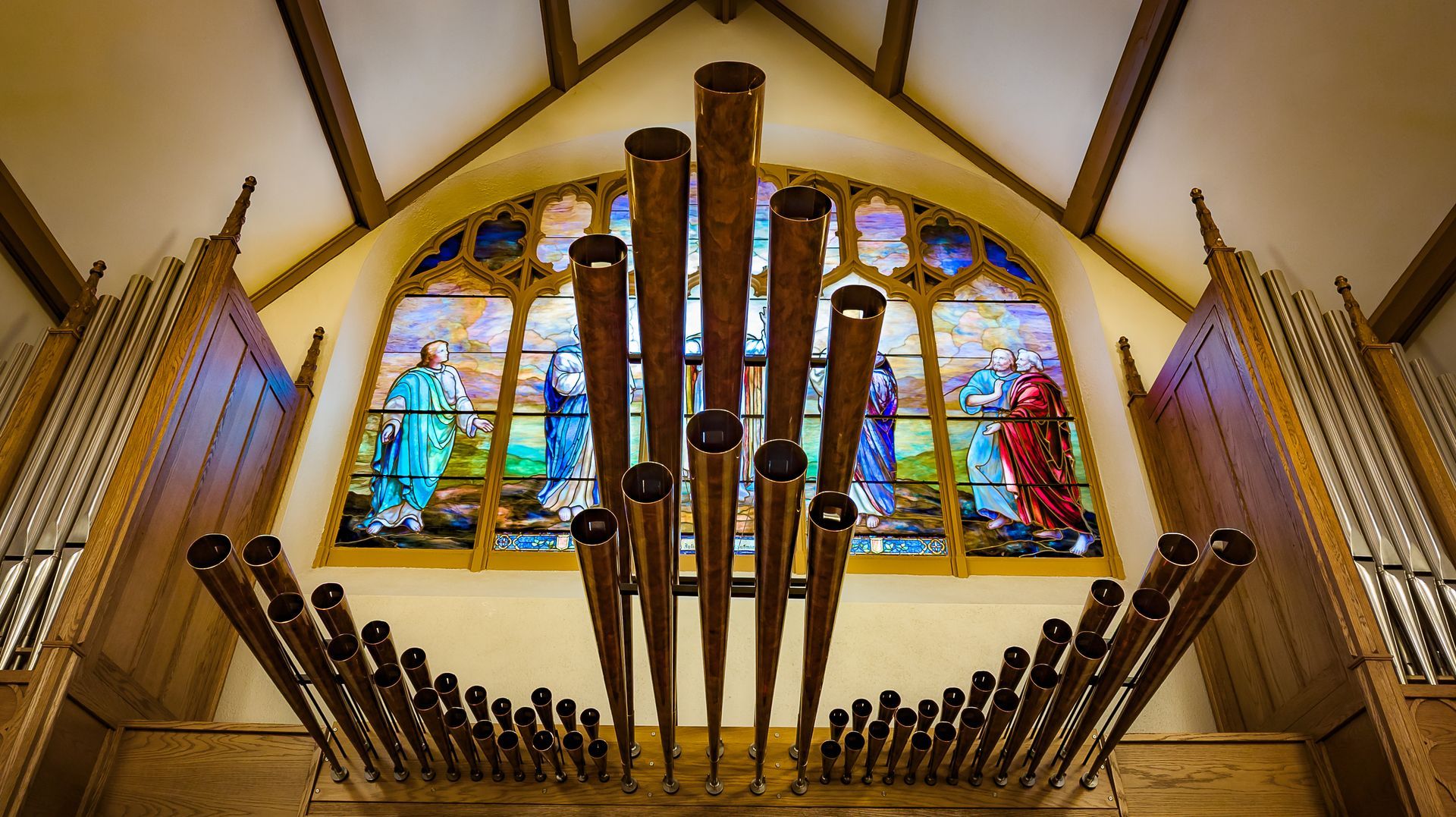
Slide title
Write your caption hereButton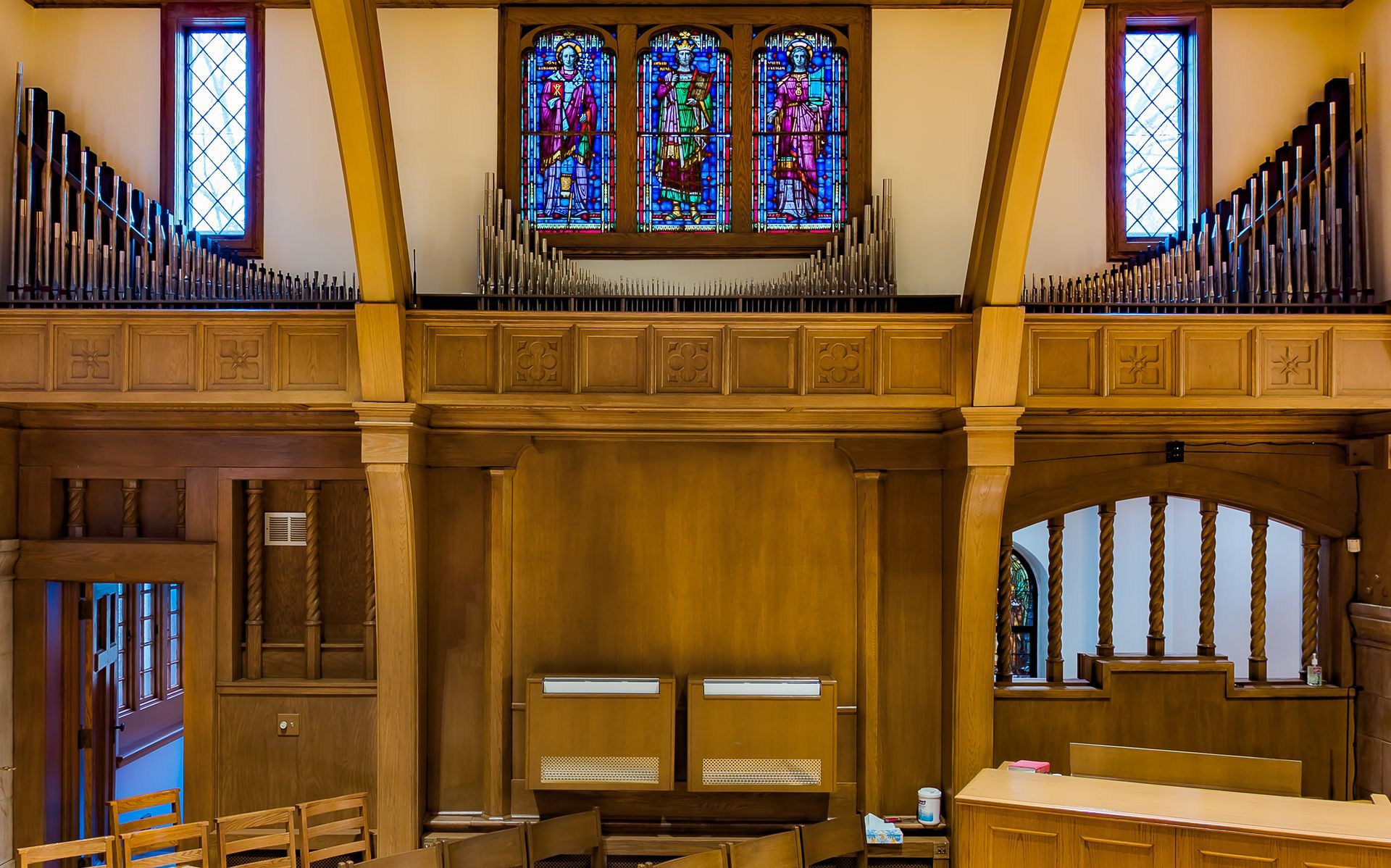
Slide title
Write your caption hereButton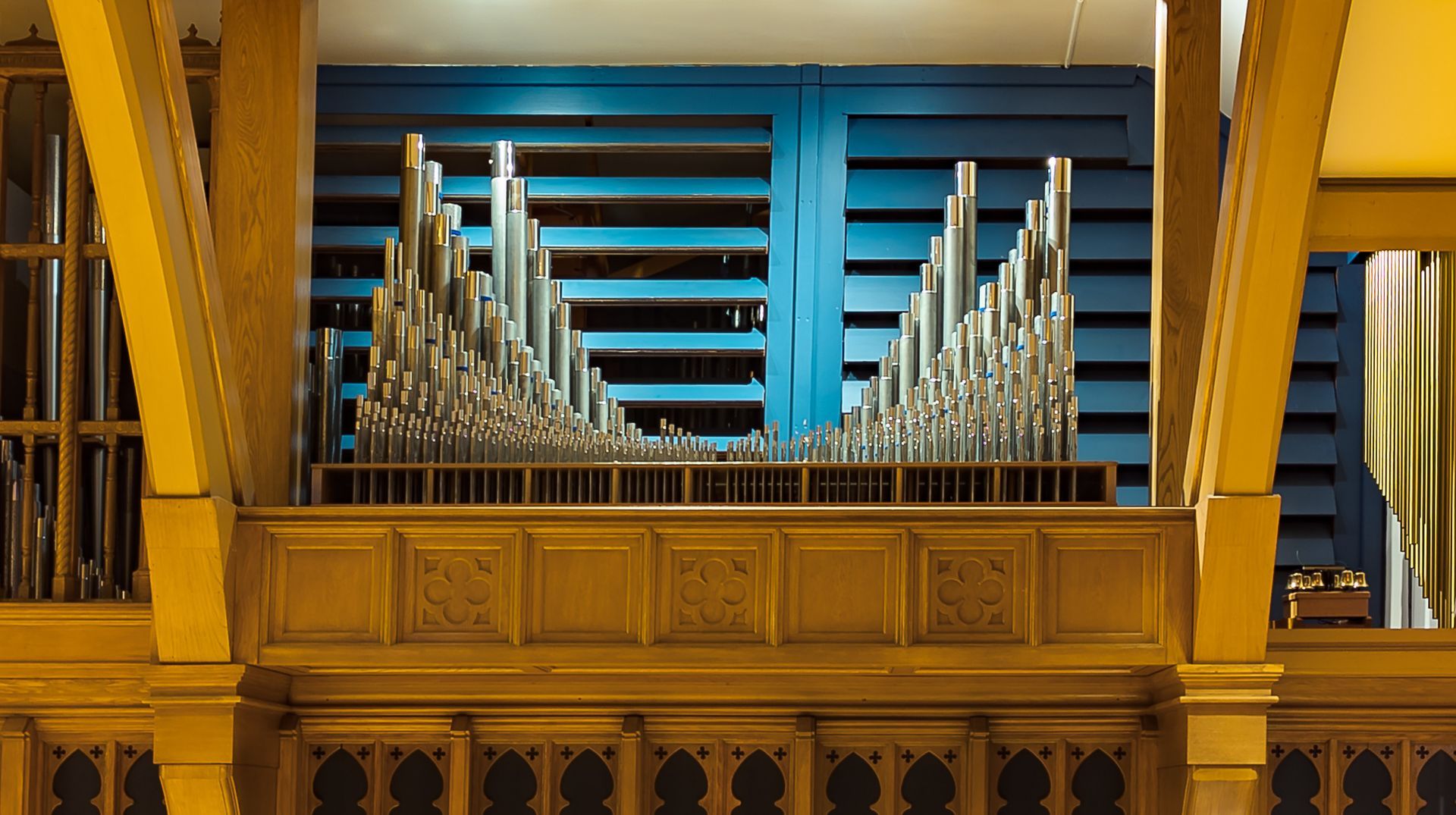
Slide title
Write your caption hereButton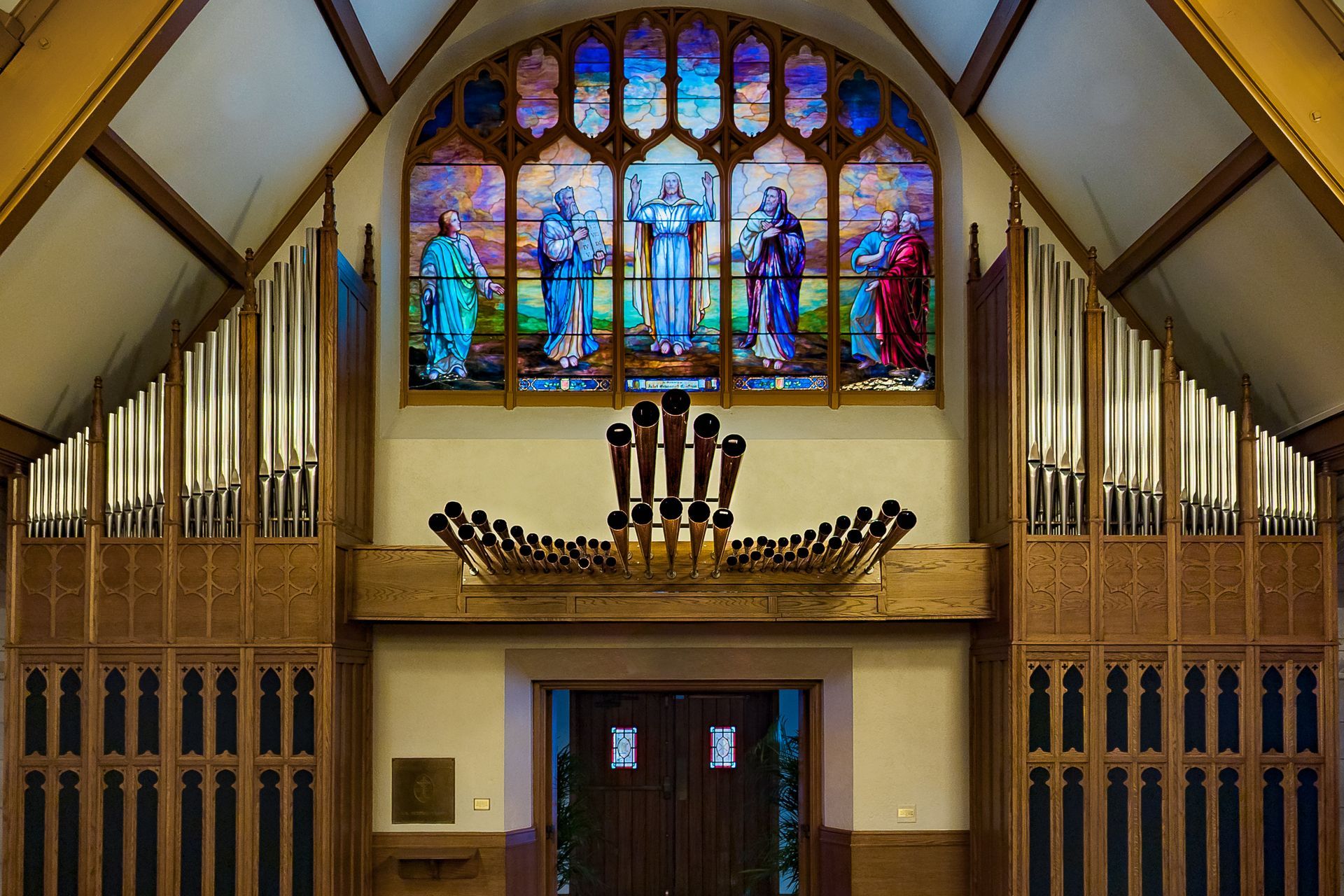
Slide title
Write your caption hereButton
CHRIST CHURCH IN SHORT HILLS / 66 HIGHLAND AVE SHORT HILLS, NJ 07078 /
(973) 379-2898 /
OFFICE@CHRISTCHURCHSHORTHILLS.ORG
